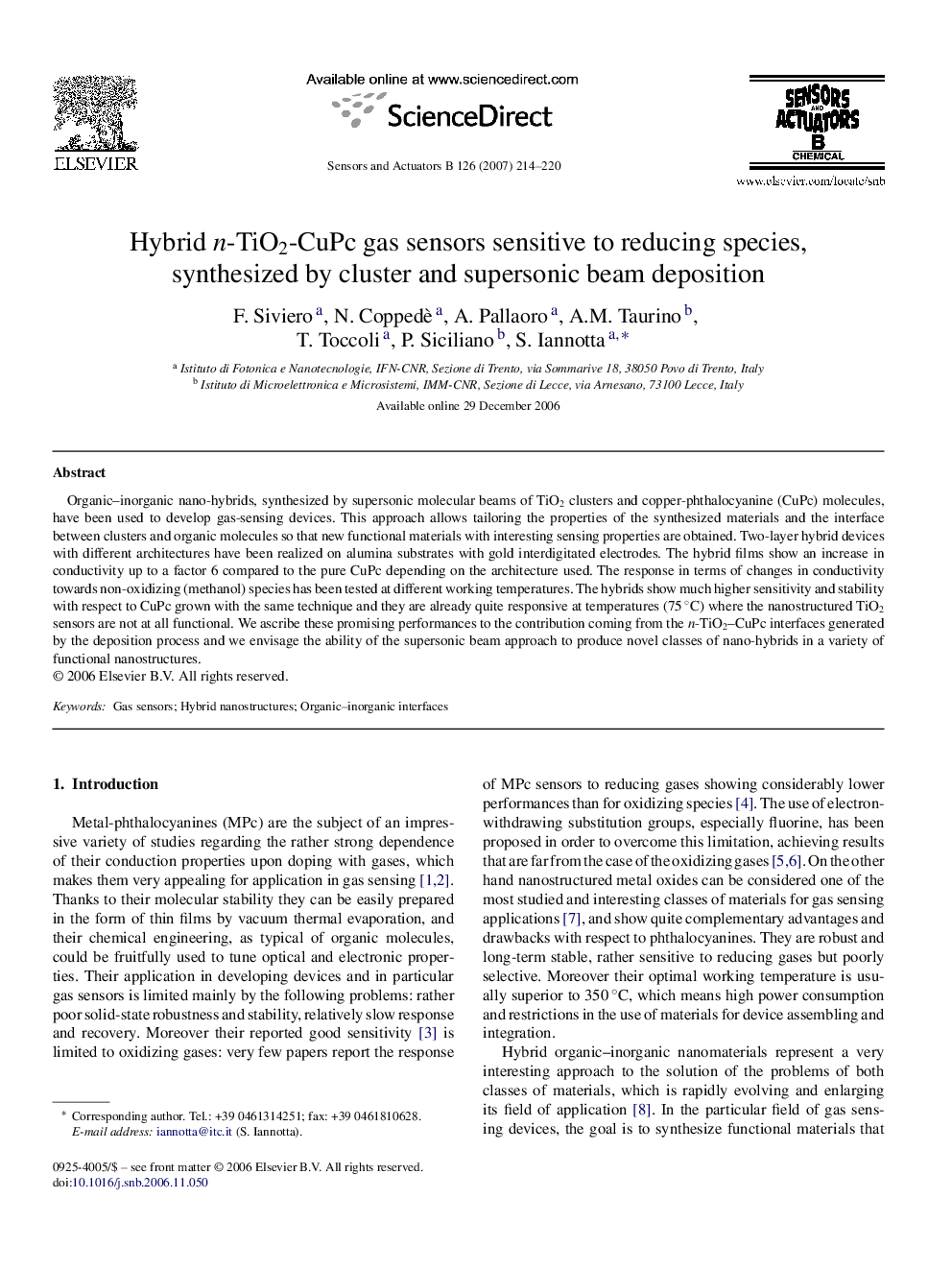| Article ID | Journal | Published Year | Pages | File Type |
|---|---|---|---|---|
| 751619 | Sensors and Actuators B: Chemical | 2007 | 7 Pages |
Organic–inorganic nano-hybrids, synthesized by supersonic molecular beams of TiO2 clusters and copper-phthalocyanine (CuPc) molecules, have been used to develop gas-sensing devices. This approach allows tailoring the properties of the synthesized materials and the interface between clusters and organic molecules so that new functional materials with interesting sensing properties are obtained. Two-layer hybrid devices with different architectures have been realized on alumina substrates with gold interdigitated electrodes. The hybrid films show an increase in conductivity up to a factor 6 compared to the pure CuPc depending on the architecture used. The response in terms of changes in conductivity towards non-oxidizing (methanol) species has been tested at different working temperatures. The hybrids show much higher sensitivity and stability with respect to CuPc grown with the same technique and they are already quite responsive at temperatures (75 °C) where the nanostructured TiO2 sensors are not at all functional. We ascribe these promising performances to the contribution coming from the n-TiO2–CuPc interfaces generated by the deposition process and we envisage the ability of the supersonic beam approach to produce novel classes of nano-hybrids in a variety of functional nanostructures.
